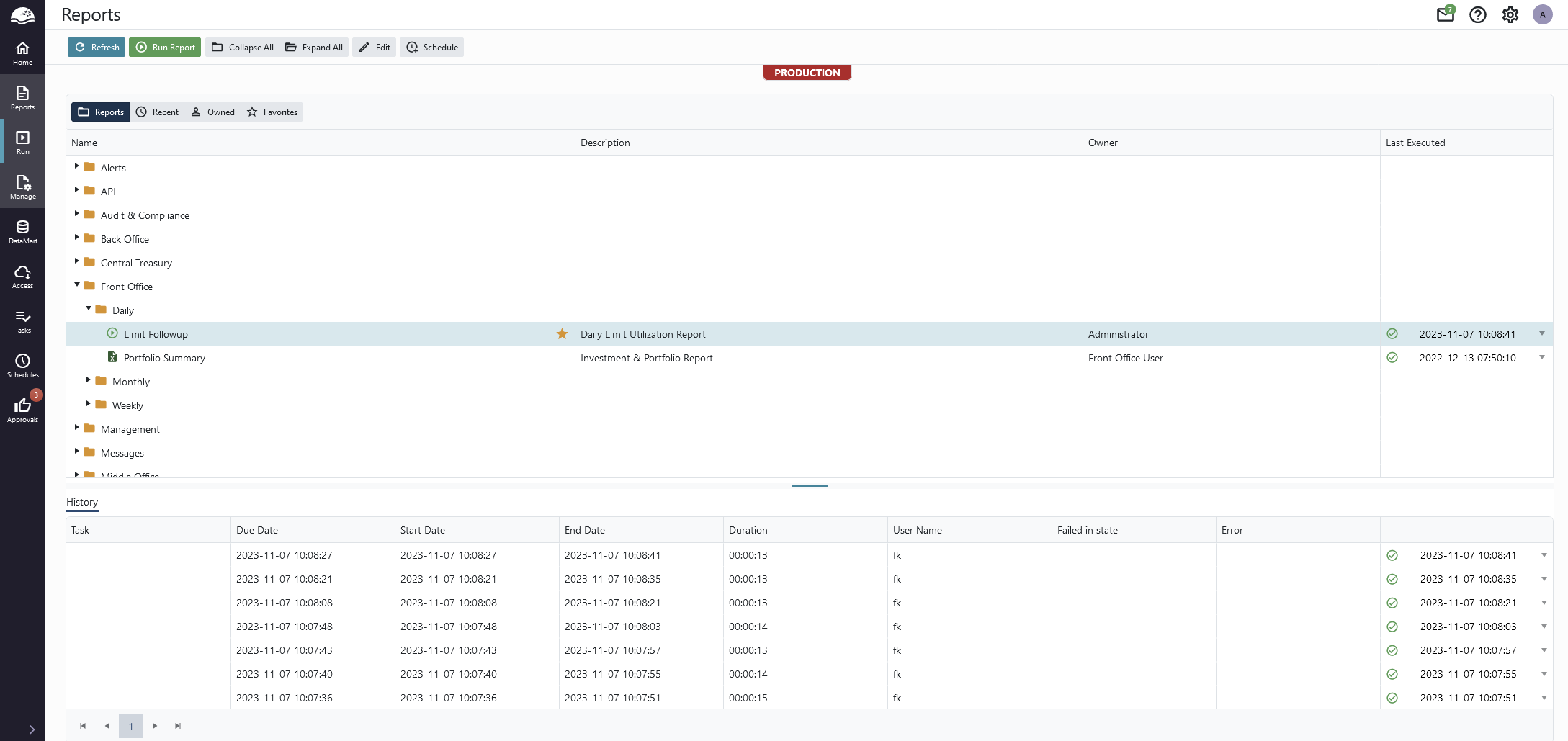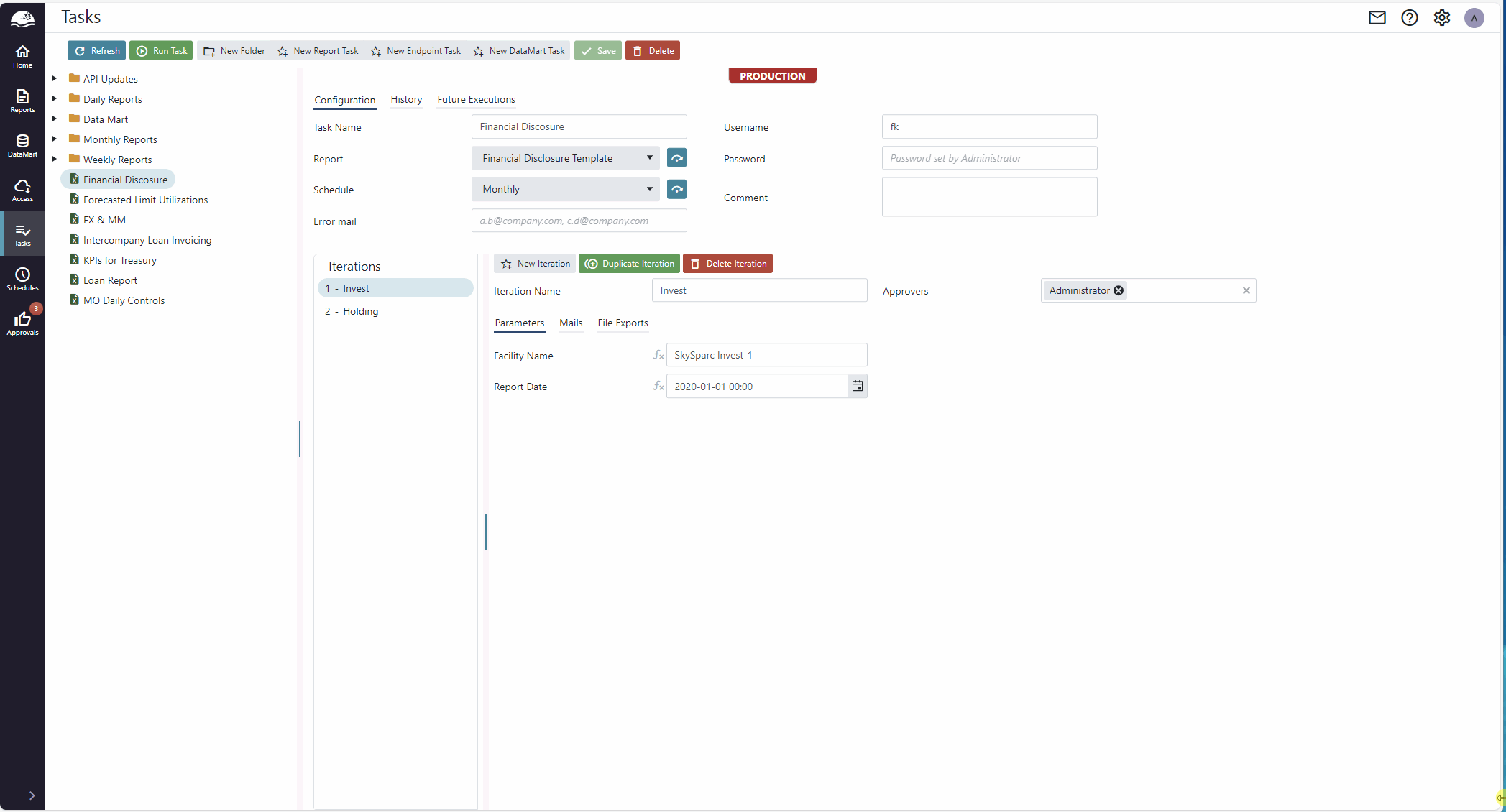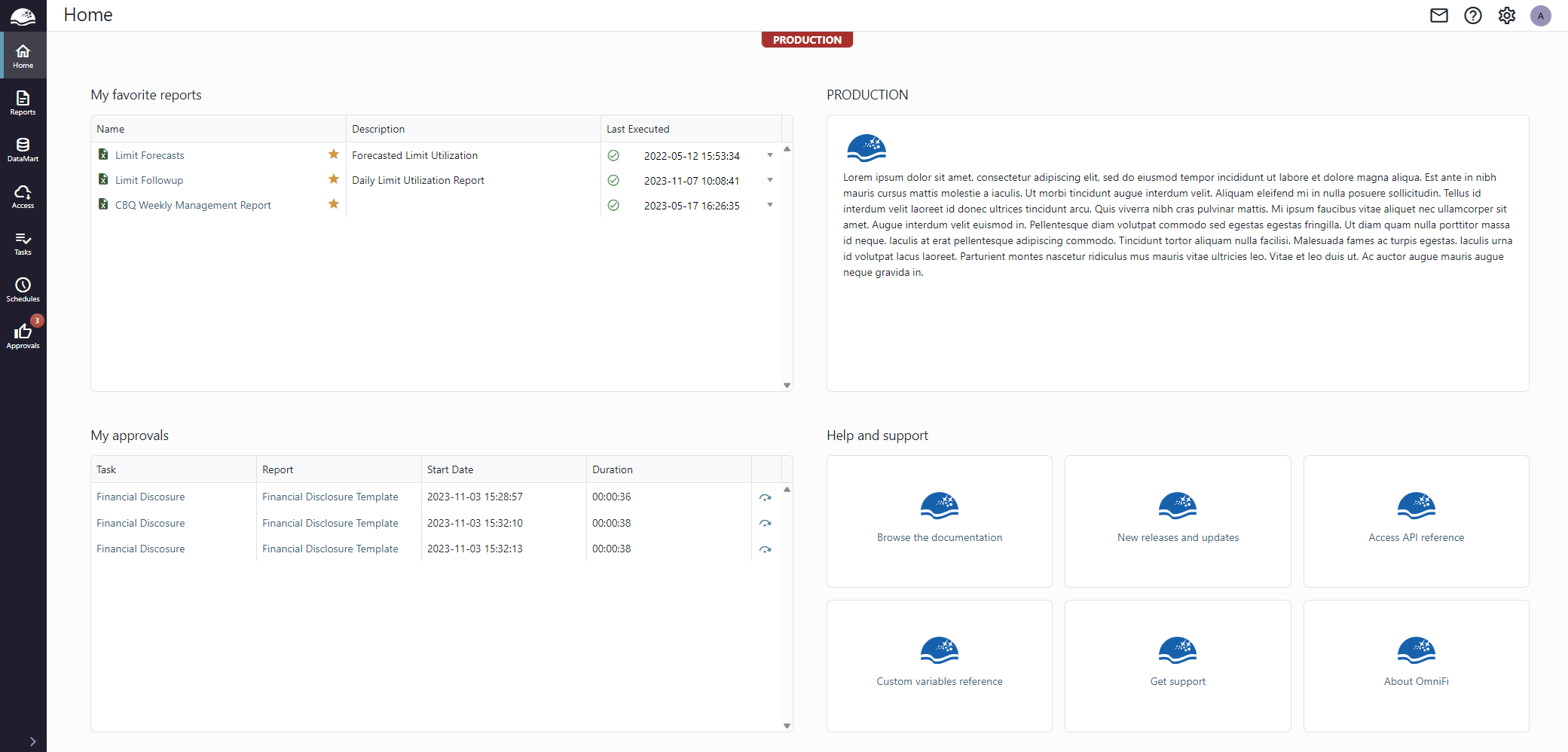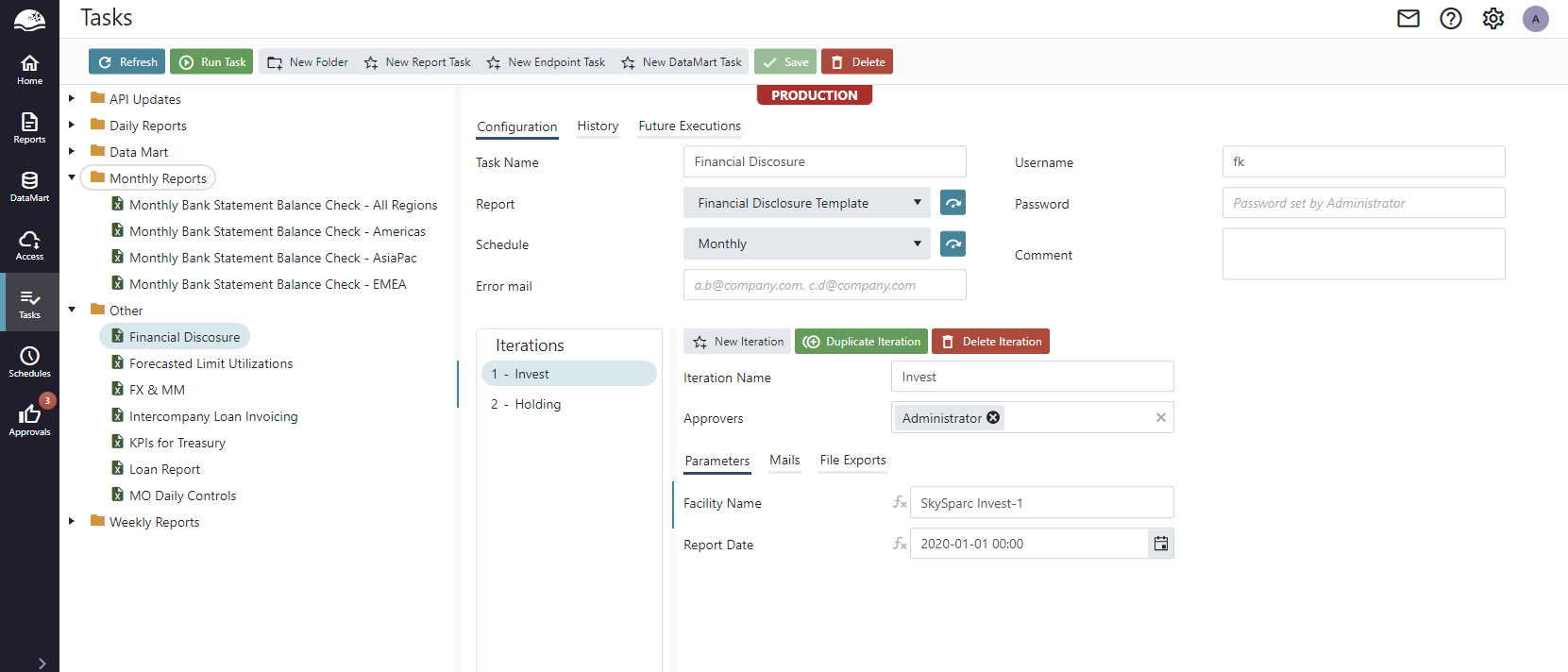Major Release: OmniFi v9.0
New OmniFi Web portal
Since its introduction in 2015, the web portal has been the work horse of the OmniFi family, relied on by dozens of corporations, banks and financial institutions to tirelessly crunch out critical operational, regulatory and management reports, day and night. Over time, its responsibility has grown significantly with the addition of Access APIs and Data Mart functionality, making it a one-stop-shop for data management, integration and distribution.
Today we say welcome to OmniFis new web portal, with its beautiful modern UI, stellar performance and great user experience!
With OmniFi v9.0, we have reimagined and reconstructed the web portal from the ground up for it to better serve its role and purpose, and foremost; Its users. There are too many enhancements and features to cover more than the highlights here, but check out the documentation for more details, or contact your engagement manager to book a demo.
NoteOmniFi Web 9.0 is a drop-in replacement for previous versions. No reconfiguration or reimplementation of collateral is required. All your reports, API endpoints, DataMart models and tasks will continue to work the way you are used to!
Appealing, adaptive user interface
A great user experience starts with an appealing user interface that is easy on the eyes, performs great, is intuitive to understand and easy to navigate. With OmniFi v9.0 we have redesigned the web portal from the ground up to provide a user experience that matches modern standards for design and usability.

The new web portal is designed to be beautiful, fast and easy to navigate.
The new web portal is adaptive, automatically organizing itself to look its best and utilize your screen to the fullest, from 4K through Full HD and half screen to mobile.

OmniFi Web automatically adapts to make the best use of any screen size, whether you run it full screen, half screen or mobile.
Along with the many quality-of-life improvements like favorite reports, task groups, cross navigation links and real-time updates, this new user experience provides vastly improved comfort and ergonomics, and makes it easier for you to find your way around the portal.
New landing page
One of the first things you may notice when logging in to the new web portal is the redesigned landing page, providing quick access to your favorite reports, pending approvals and documentation.

The new landing page provides immediate access to favorite reports, pending approvals and documentation.
Favorite reports
For you to easily find the things you use the most, you can now add reports to your favorite collection.

The Favorites view shows only the reports you have chosen to favorite.
Your favorite reports can easily be found in the Reports view by adding the Favorites filter. This changes the report tree into a flat list of all your favorite reports.
You can also use the Recent or My reports filter to quickly find what you need, without digging through folders.

The Recent view shows recently run reports.
Improved performance
While exploring the new web portal, one thing you will notice is that it is fast. You don't have to wait for the application, the application waits for you, as it should be!
We have worked hard to optimize every aspect of the portal, and adding to that, it utilizes state-of-the-art WebAssembly technology, providing blazing fast performance and client-side calculations.
Multi-calendar support
The web portal now supports multiple calendars, managed from the calendars page.

The Calendars page lets you configure any number of calendars with weekend days and holiday events.
Calendars are used by schedules, and configured with weekend days and holiday events, to support your multinational operation. Calendar events can be edited manually, or uploaded directly as a flat file, so you can quickly bulk-upload events in a single go.
Real-time updates
Whether you are running a report manually or tracking a large batch of Data Mart imports, OmniFi Web keeps you up to date on the progress. Reports, tasks and executions all update in real time, so you can easily assess the progress at a glance. You don't need to refresh the views to see the latest status, the information is automatically provided for you.
Task groups
Tasks and schedules are now displayed in separate views. Instead of being grouped by schedule, tasks have their own folder structure that lets you organize your tasks in any way that makes sense to you, instead of by schedule.

The task group structure allows better organization of tasks.
With tasks to update Data Mart tables, pre-heat API snapshots or functions, and run reports for a wide variety of purposes, the new folder structure makes managing all these tasks much easier. If you need to know what tasks run under a specific schedule, this information is available on the Schedules page.

All tasks utilizing a schedule can be found on the Schedules page.
Intraday schedule recurrence
Lastly, we'd like to highlight a small but significant enhancement we know has been highly anticipated; Schedule recurrences can be configured to run at multiple intraday executions. The recurrence time field supports multiple time instants using an enhanced intraday syntax that lets you configure multiple executions with one single, simple rule.

Schedule is configured to run every half hour during business hours with a single intraday rule.
With this, you should rarely need to configure more than one or two recurrence rules!